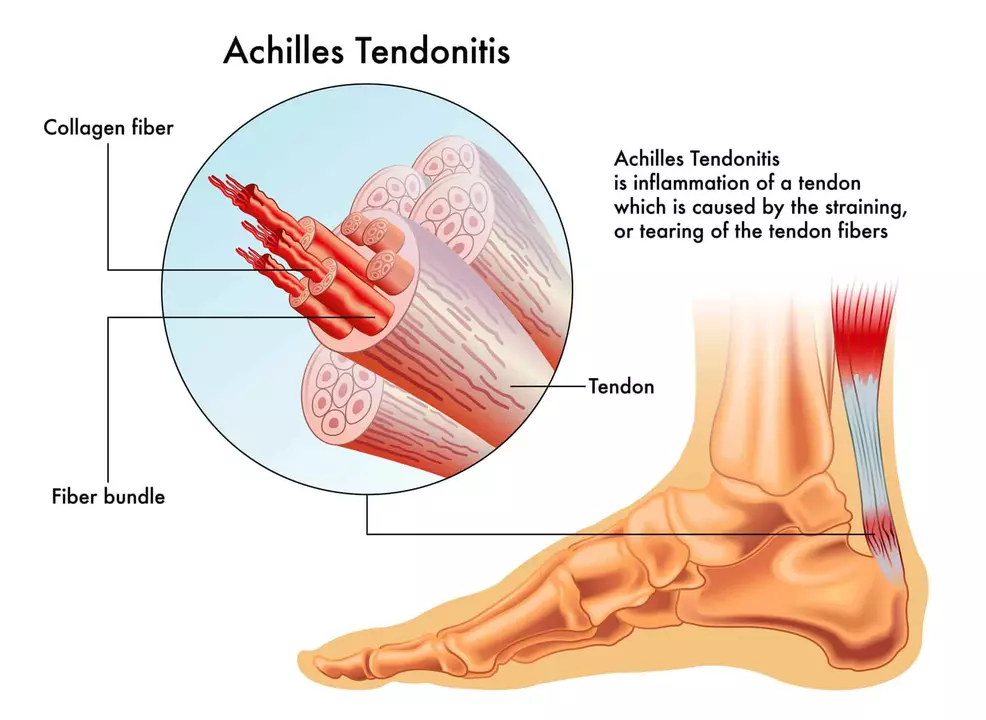Tendonitis: Practical Ways to Beat Tendon Pain
Got a sore tendon that won’t quit? Tendonitis (tendinopathy) is inflammation or degeneration of a tendon from overuse, poor load management, or sudden increase in activity. It shows up as localized pain with movement, stiffness after rest, and sometimes swelling. The good news: most cases respond to simple, targeted steps you can start today.
Quick relief and first steps
If it’s fresh (first 48–72 hours), ease the load: stop the activity that caused it and avoid movements that sharply increase pain. Use ice for 10–15 minutes after activity to ease pain and swelling. Over-the-counter pain relief like ibuprofen can help short-term—ask a pharmacist if you have doubts. Complete rest rarely helps long-term; aim to reduce pain-provoking activities but keep gentle movement to maintain mobility.
Watch for warning signs: if the area is very hot, red, getting worse quickly, or you have fever, see a doctor—those could mean infection. Sudden severe pain or a popping sensation after an injury may mean a tendon tear and needs urgent medical review.
Rehab: how to load tendons the right way
Tendons get better when given the right kind of stress. That means progressive loading—start easy and build up. Here are proven, clear programs for common areas:
- Achilles tendinopathy: try the Alfredson eccentric protocol—slow heel drops, 3 sets of 15 reps, twice daily, both with straight and with slightly bent knee, for several weeks. You should feel fatigue but not sharp pain during the exercise.
- Patellar (knee) tendinopathy: decline squats (small decline board) 3 sets of 15, three times a week. Increase load slowly and stop if pain spikes.
- Tennis elbow (lateral epicondylitis): eccentric wrist extension with a light dumbbell or resistance band, 3 sets of 15 daily, plus isometric holds for pain control.
- Shoulder tendinopathy: start with pain-free isometrics (pressing hand into a wall for 10 seconds, 10 reps) then progress to rotator cuff strengthening and scapular control exercises under guidance.
Expect slow improvement—tendons heal slowly. Many people see meaningful gains in 6–12 weeks, but full recovery can take months. Be patient and stick to the program.
Other options: physiotherapy, guided exercise plans, and hands-on treatment can speed recovery. Corticosteroid injections may reduce pain short-term but can weaken tendons—use cautiously. PRP (platelet-rich plasma) and needling are options for stubborn cases; evidence varies, so discuss risks and benefits with a clinician. If you haven’t improved after 6–8 weeks, or pain is worsening, get evaluated—ultrasound or MRI may help.
Prevention is simple: warm up, increase training load slowly (no more than 10% a week for athletes), fix technique and posture, choose supportive shoes, and build balanced strength. Small daily habits—short breaks during repetitive work, light strengthening, and good sleep—keep tendons happy. Want a quick checklist to follow? Replace any sudden increases in activity with gradual progress, do your rehab exercises, and see a physio if things stall.
Need exercise examples tailored to your tendon (Achilles, elbow, shoulder)? Ask and I’ll give a short plan you can start this week.

Tendonitis vs. Tendinosis: What's the Difference?
May 12, 2023, Posted by Mike Clayton
As a blogger, I've come across many people who get confused between tendonitis and tendinosis. It's important to understand that tendonitis is the inflammation of a tendon, typically caused by sudden injury or overuse, while tendinosis refers to chronic degeneration of the tendon due to repetitive strain. In simpler terms, tendonitis is an acute condition with inflammation, whereas tendinosis is a long-term issue resulting from wear and tear. Treatment for tendonitis generally includes rest, ice, and anti-inflammatory medications, while tendinosis may require more extensive therapy, such as eccentric exercises or even surgery in severe cases. Knowing the difference between these two conditions can help you seek appropriate treatment and prevent further damage to your tendons.
MORESEARCH HERE
Categories
TAGS
- treatment
- online pharmacy
- dietary supplement
- side effects
- health
- dietary supplements
- health benefits
- online pharmacy Australia
- medication adherence
- medication safety
- thyroid disorders
- treatment option
- calcipotriol
- blood pressure
- erectile dysfunction
- closer look
- optimal health
- sexual health
- bacterial infections
- nutrition
